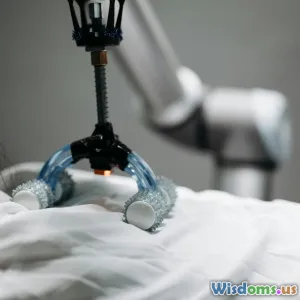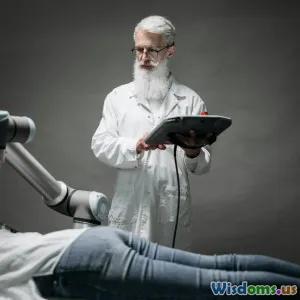
The Future of Robotics in Surgery
5 min read Explore how robotics is transforming surgical practices and patient outcomes in the future. (0 Reviews)
The Future of Robotics in Surgery
Robotics is increasingly revolutionizing various sectors, with healthcare being one of the most promising fields. As technology advances, the role of robotics in surgery is becoming more prominent, reshaping how surgeries are performed and improving patient outcomes. This article explores the current advancements in surgical robotics, the potential future developments, and the implications for healthcare.
Understanding Surgical Robotics
Surgical robotics refers to the use of robotic systems to assist surgeons in performing operations. These systems range from robotic arms that assist with precision to fully autonomous robots that can operate independently. The most notable example is the da Vinci Surgical System, which allows surgeons to perform minimally invasive surgeries with enhanced precision and control.
Current Applications
Today, surgical robots are utilized in various specialties, including:
- Urology: Robotic-assisted prostatectomies have become standard due to their precision and reduced recovery times.
- Gynecology: Robotic systems assist in performing complex procedures like hysterectomies with minimal incisions.
- Cardiothoracic Surgery: Robots facilitate heart surgeries, allowing for smaller incisions and faster recovery.
These applications highlight how robotics enhances surgical capabilities, allowing for better outcomes and less trauma to patients.
The Advantages of Robotic Surgery
Robotic-assisted surgical procedures offer numerous advantages:
- Precision and Control: Robots provide enhanced dexterity, allowing surgeons to perform intricate maneuvers that are challenging with traditional methods.
- Minimally Invasive Techniques: Robotic systems often enable smaller incisions, leading to reduced pain, less scarring, and quicker recovery times.
- Improved Visualization: Surgeons benefit from high-definition 3D visualization, providing a clearer view of the surgical site.
Challenges and Considerations
While the future of robotics in surgery is bright, several challenges remain:
- Cost: Robotic systems are expensive, limiting accessibility in some healthcare settings.
- Training: Surgeons require specialized training to operate robotic systems effectively, which can be time-consuming.
- Integration with Existing Systems: Ensuring that robotic platforms seamlessly integrate with existing hospital technologies is crucial for widespread adoption.
Future Innovations in Surgical Robotics
The future of robotics in surgery promises exciting advancements:
- Artificial Intelligence (AI): The integration of AI will enhance robotic systems' capabilities, allowing for real-time decision-making and improved surgical precision.
- Tele-surgery: Robotics could enable surgeons to operate remotely, providing access to expert surgical care in underserved areas.
- Autonomous Surgery: While still in the early stages, the concept of fully autonomous surgical robots is being explored, potentially transforming how surgeries are performed.
Case Studies and Success Stories
Several hospitals and research institutions are already leveraging robotic systems to improve surgical outcomes:
- Johns Hopkins Hospital: Implemented robotic-assisted surgeries for complex cases, resulting in significantly lower complication rates.
- Cleveland Clinic: Pioneered the use of robotic systems in cardiac procedures, showcasing reduced recovery times and enhanced patient satisfaction.
These examples underscore the transformative potential of robotics in surgical practice.
Conclusion
As we look to the future, the role of robotics in surgery is set to expand dramatically. With advancements in technology, the integration of AI, and the potential for tele-surgery and autonomous systems, the landscape of surgical care is changing. While challenges remain, the benefits of robotic-assisted surgeries are clear, improving patient outcomes and revolutionizing how surgeons approach their work. As healthcare continues to evolve, embracing these innovations will be vital for advancing surgical practices and enhancing patient care.
In conclusion, the future of robotics in surgery not only promises improved precision and outcomes but also aims to make surgical care more accessible and efficient. The journey is just beginning, and the possibilities are boundless.
Rate the Post
User Reviews
Popular Posts





















